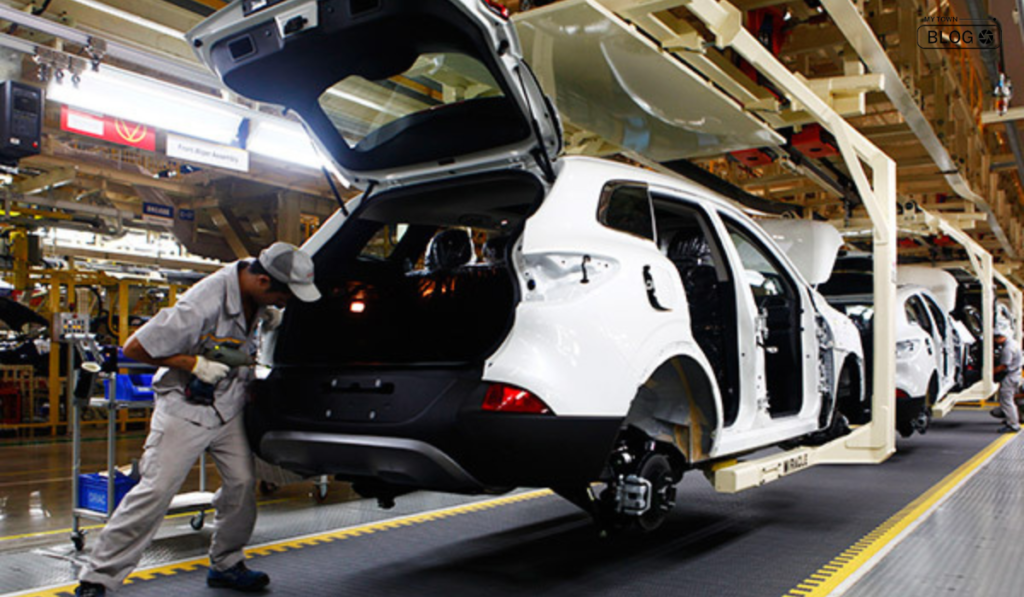Tata Motors has unveiled its fourth Registered Vehicle Scrapping Facility (RVSF) in Chandigarh, named Re.Wi.Re, reaffirming its commitment to sustainable mobility. Tata Motors’ ‘Recycle with Respect’ unit inaugurated by Shailesh Chandra, MD of Tata Motors Passenger Vehicles and Electric Mobility.
Chandigarh facility, following India’s scrappage policy, disassembles 12k vehicles annually, including both passenger and commercial brands. Operated by Tata Motors’ partner, Dada Trading Company, the RVSF adopts a fully digitalized and paperless approach.
Re.Wi.Re distinguishes itself through dedicated dismantling processes for commercial and passenger vehicles, featuring specialized stations for recycling components such as batteries, tires, oils, and gases. The meticulous documentation and dismantling procedures prioritize safety and resource recovery.

In line with similar RVSF units successfully launched by Tata Motors in Jaipur, Bhubaneshwar, and Surat in recent years, the Chandigarh facility significantly bolsters Tata’s scrappage infrastructure. With an impressive annual capacity to sustainably scrap 12,000 vehicles, this initiative aligns with Tata Motors’ dedication to fostering a circular economy.
Tata Motors MD, Shailesh Chandra, highlights Chandigarh facility as a major step for sustainability and circular economy in Indian automotive. Under Tata’s clean mobility initiative, empowering customers for ethical vehicle recycling is the goal
Conclusion
Tata Motor’s Re.Wi.Re launch in Chandigarh showcases a firm commitment to sustainable mobility and responsible environmental practices. With a robust dismantling capacity of 12,000 vehicles annually, the facility aligns seamlessly with India’s vehicle scrappage policy guidelines and contributes significantly to Tata Motor’s growing network of scrappage infrastructure. Tata Motor’s prioritizes a digital, paperless system, focused dismantling, and specialized recycling stations, showcasing commitment to safety, resource recovery, and ethical practices. This initiative not only marks a significant leap towards greater sustainability but also reinforces Tata Motor’s pivotal role in driving positive change within the Indian automotive sector.
FAQs
What is Re.Wi.Re?
Re.Wi.Re is the Registered Vehicle Scrapping Facility launched by Tata Motor’s in Chandigarh. It stands for Recycle with Respect and is part of Tata Motor’s commitment to sustainable mobility.
What is the annual dismantling capacity of the Chandigarh facility?
The facility in Chandigarh has an annual dismantling capacity of 12,000 end-of-life vehicles, encompassing both passenger and commercial vehicles of any brand.
Who inaugurated the Re.Wi.Re facility in Chandigarh?
The facility was inaugurated by Shailesh Chandra, Managing Director of Tata Motor’s Passenger Vehicles and Tata Passenger Electric Mobility.
How is the scrapping facility operated?
The Re.Wi.Re facility in Chandigarh is set up and operated by Tata Motor’s partner, Dada Trading Company, showcasing a collaborative effort towards sustainable practices.
What distinguishes the Re.Wi.Re facility in terms of environmental practices?
The facility adopts a fully digitalized and paperless approach, featuring dedicated dismantling processes for commercial and passenger vehicles. It includes specialized stations for recycling components such as batteries, tires, oils, and gases, prioritizing safety and resource recovery.
Is this the only scrapping facility Tata Motors has established?
No, the Chandigarh facility follows the successful establishment of similar Registered Vehicle Scrapping Facility (RVSF) units by Tata Motors in Jaipur, Bhubaneshwar, and Surat in recent years.
What is the broader impact of Tata Motors’ scrappage initiative?
Tata Motors’ 12,000-vehicle annual scrappage initiative fosters a circular economy, promoting sustainability in the Indian automotive sector.
How does Tata Motors envision driving positive change with this initiative?
Tata Motor’s MD, Shailesh Chandra, champions ethical vehicle recycling for a sustainable future, fostering positive change and a circular economy.








